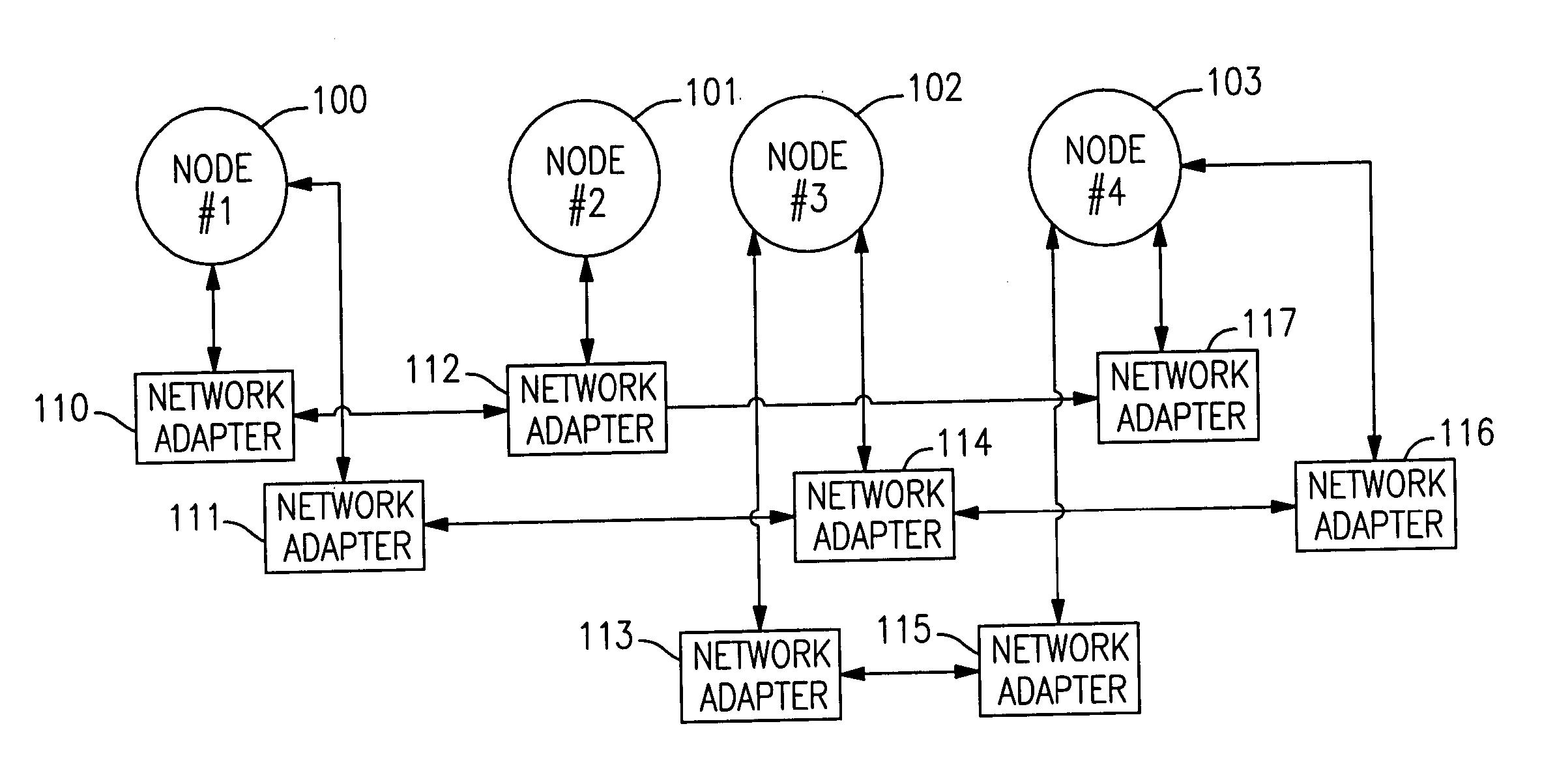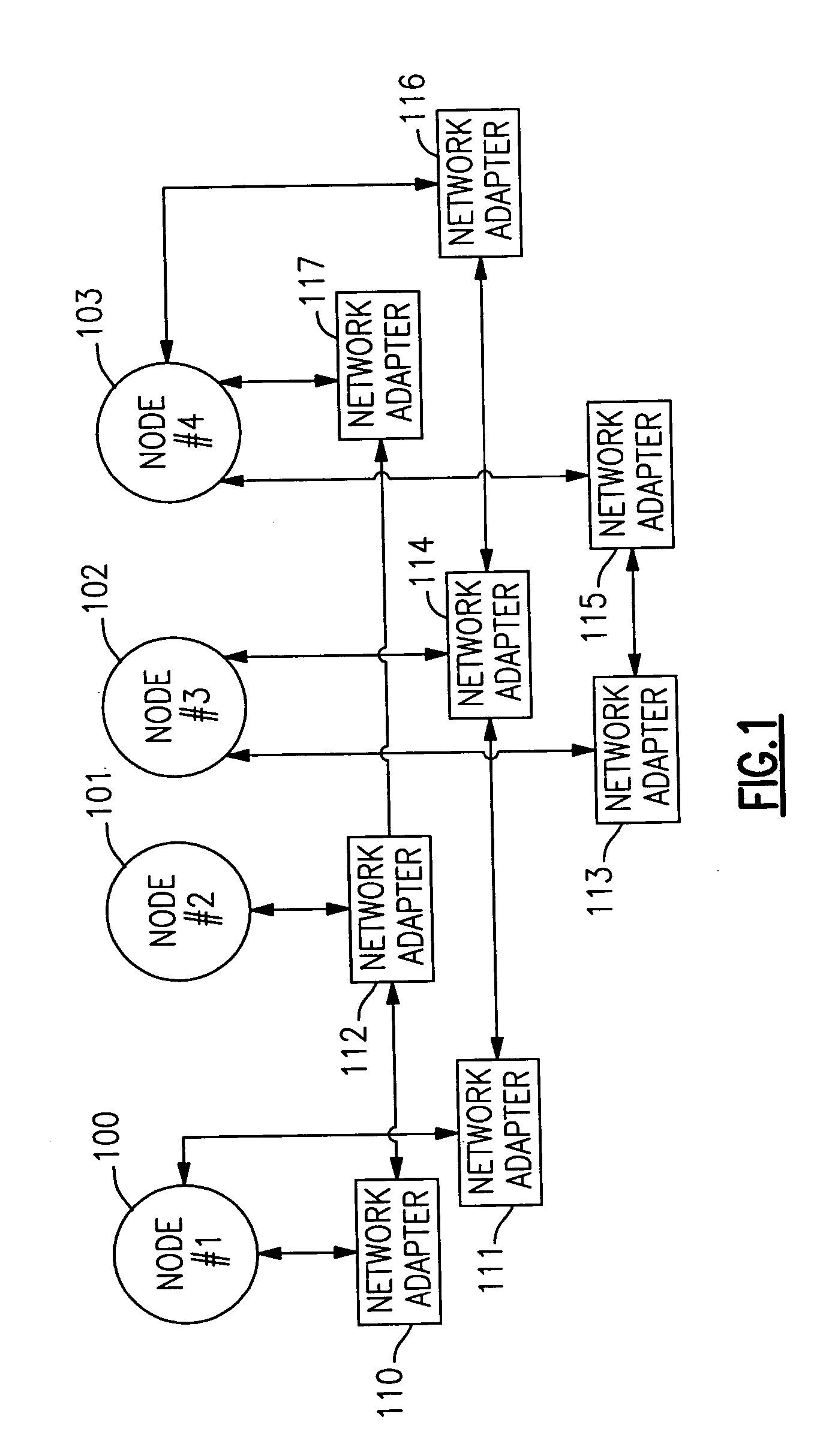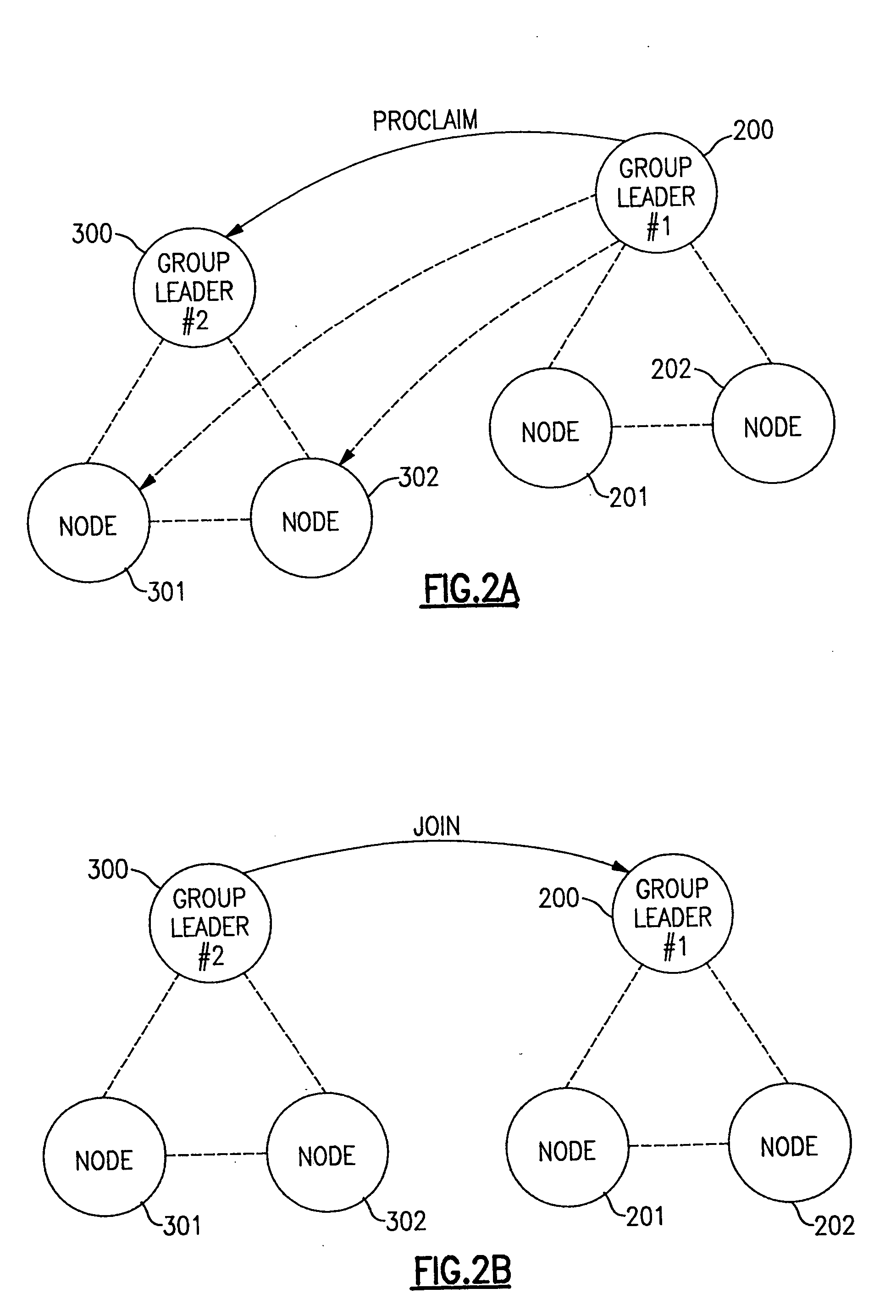Method for determination of remote adapter and/or node liveness
- Summary
- Abstract
- Description
- Claims
- Application Information
AI Technical Summary
Benefits of technology
Problems solved by technology
Method used
Image
Examples
Embodiment Construction
[0044] The present mechanism is provided to prevent “false downs” that result from daemon blockage under stress loads and under other conditions that cause processes to be blocked. The mechanism uses Internet Control Message Protocol (ICMP) echo request messages, which are sent to the node / adapter which is suspected of being down. Since such messages are responded to by the kernel in interrupt mode, they are responded to even if the peer daemon is temporarily blocked. If an ICMP echo-reply response is received from the “suspected-dead” node or adapter, then a grace period is established for it, and the node or adapter is not declared dead, at least initially.
[0045] The present mechanism offers advantages over the three approaches itemized in the list given above. Unlike the first alternate approach suggested above, the detection time for real adapter and / or node failures is not increased. The present mechanism is also more effective than the second alternate approach given above, s...
PUM
 Login to View More
Login to View More Abstract
Description
Claims
Application Information
 Login to View More
Login to View More - R&D
- Intellectual Property
- Life Sciences
- Materials
- Tech Scout
- Unparalleled Data Quality
- Higher Quality Content
- 60% Fewer Hallucinations
Browse by: Latest US Patents, China's latest patents, Technical Efficacy Thesaurus, Application Domain, Technology Topic, Popular Technical Reports.
© 2025 PatSnap. All rights reserved.Legal|Privacy policy|Modern Slavery Act Transparency Statement|Sitemap|About US| Contact US: help@patsnap.com



